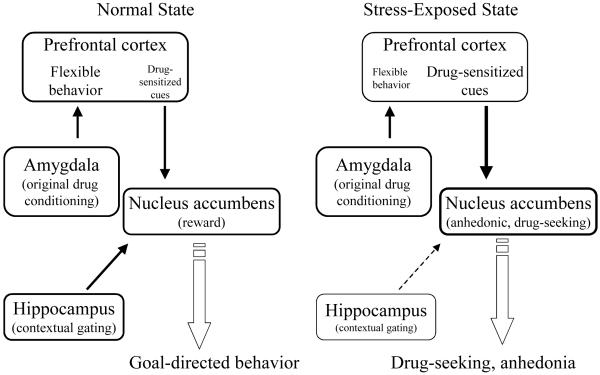Figure 1.
“Desperately driven with no brakes” is illustrated by this circuit of the stress-exposed brain. Under non-addictive states, the nucleus accumbens receives input from a number of brain regions, including the hippocampus and the prefrontal cortex. These inputs serve to modulate the response of the nucleus accumbens in a manner that is controlled, flexible, and contextually relevant. Following stress exposure, this system is less well modulated. Hippocampal gating of cortical inputs is reduced. Moreover, the prefrontal cortex inputs respond more selectively to drug-conditioned cues, which is vital is a critical factor leading to for relapse.

